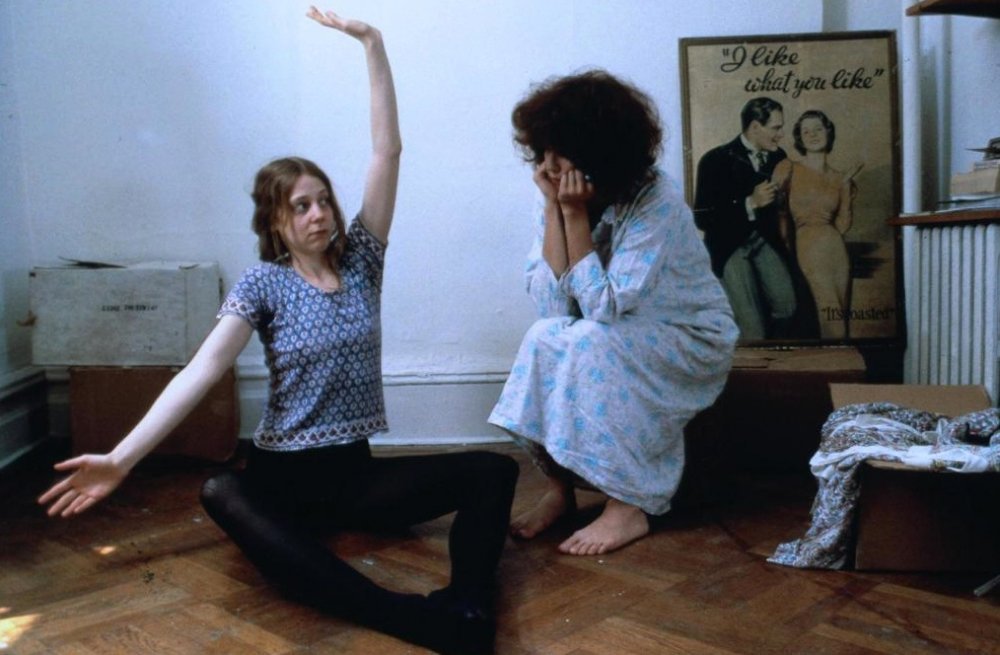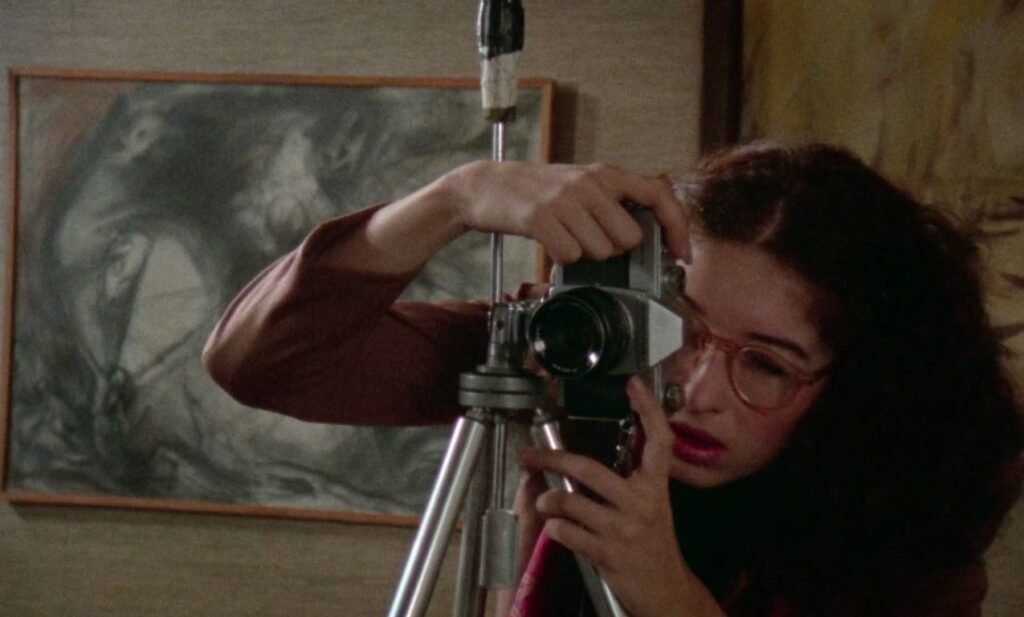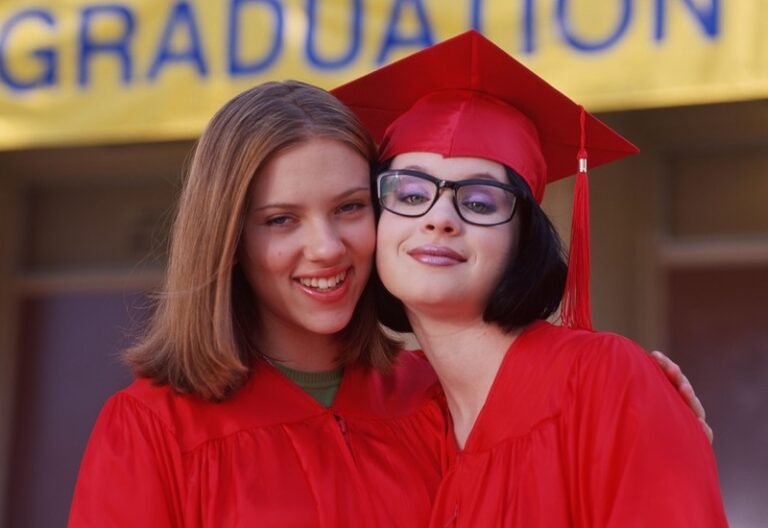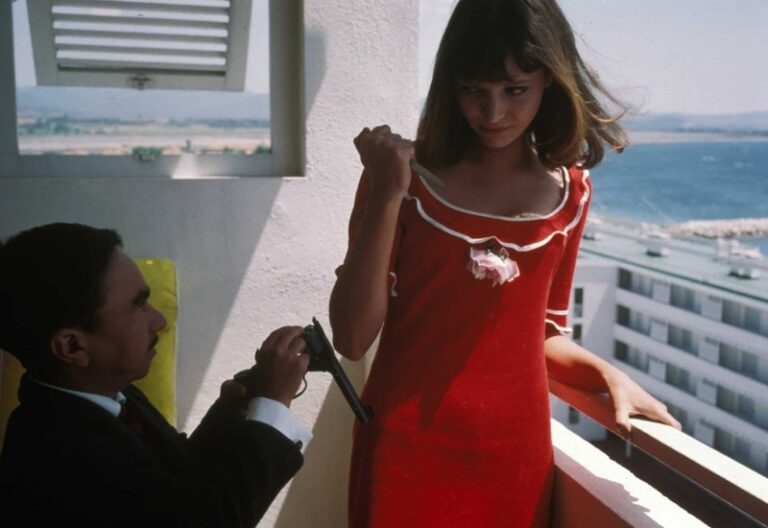girlfriends review
film by Claudia Weill (1978)
Claudia Weill did not expect to have an epiphany regarding the Domestic Space/Human Fraternity dialectic, she especially did not expect it to sock so rawly home, but I suppose a world of possibility opens while filming The Other Half of the Sky: A China Memoir.
Review by: James Carneiro | Filed Under: Film Reviews
April 21, 2025
This marvelous “solidarity tour” documentary, a series of candid interactions with women struggling to liberate themselves from patriarchal oppression and imperialist-imposed underdevelopment and the messy contradictions of constructing socialism in the global periphery… well, it was some gristly grub for contemplation for the budding documentarian. Unburdened by male mediators, Weill simply watched and listened and learned. She was most taken by the women who simultaneously relished the roughhewn, everyday warmth and practicality of commune life, yet also longed for private moments, private space, just for themselves.
Did the commune literally have the spatial requirements for “a room of one’s own” for half the inhabitants? (If not, it is a great slur against socialist-era China and I am Telexing the Ghost of Jiang Qing a constructively worded polemic entitled “Square Feet Unbound: A Critical Reappraisal of Gendered Space In Hinton’s Shenfan”) They did not see a contradiction there; as they were always careful to emphasize, “collectivism and autonomy are not mutually exclusive. They exist in a dialectic. Maybe you can tell your friends in the East Village that.”

Susan Weinblatt and Anne Munroe have that most special type of friendship–a bond where you simply share the mundanity of life, bullshit, bum smokes, occupy the same living space. Cynics would dismiss them as roommates, but we know better; they are close as platonic bonds will allow. Susan is an aspiring gallery photographer; she is relegated to shooting bar and bat mitzvahs. Anne is an aspiring novelist; she is relegated to her friend’s gentle put-downs. You immediately “root” for Susan and Anne’s friendship because, while several kilometers downstream from “perfect,” it’s the only authentic bond either of them are able to forge in this chilly, post-bankruptcy Manhattan of pitiless sexual-economic calculus.
Relationships live or die on “Will this person help or hinder my ability to find steady, reasonably paying, spiritually satisfying work?” “Does he want to move in because he genuinely enjoys my company or am I more something to show off to parents, old college friends from The Village?” “Must one achieve some level of economic security before pursuing artistic ends? Or is it the other way around?” “Why is it so goddamn difficult to Craft Art while caught up in the buzzing monotony of others’ lives, yet we become debilitatingly lonely after finally winning that Room Of One’s Own?” “Is chronic poverty making me clingy and annoying? Or was I already like this growing up on Long Island?”
From Mid-Life Crisis Rabbi to the gaggle of gallery snobs to Psychic Violence Cabbie, everything is algebraic, cynical, icy, a mustard stain of UNFAIR on what should be a Young Adulthood of Self-Actualization. The dramatic tension of the film lies not in ‘Will Susan & Anne Have To Make Sacrifices?’ but rather ‘Which Sacrifices Will They Choose, And What Level Of Humiliation Will They Incur?’ Only in (Honky Capitalist) New York!

Weill and screenwriter compatriot Vicki Polon have crafted a Manhattan which is bleak, sometimes punishingly so, but the humor is there if one bends their rabbit ears toward the AM Waves of the Deliriously Deadpan. Girlfriends speaks in ellipses. It is anticlimactic, story threads picked up and tossed away and seized again according to their own wonky logic, scenes ending because they Damn Well Feel Like It. I realized, with the dawning giddiness of a young Karl Marx discovering (and then dissembling!) Hegel, that there was quite literally humor in the editing, the temporal confusion, the spatial alienation.
I saw 70’s Manhattan, sure, but peeling underneath The Visible Textures, I saw Claudia Weill painting A TRIO OF SEVERE DOTS on every stop sign, sixpack of Brooklyn Lager, bummed Lucky Strike, aborted conversation, impasse in The Jockeying For Psychosexual Power. I think, in her own understated way, Weill has directed one of the most quietly subversive films to erupt from New Hollywood, and she sets a great deal of it to klezmer refrains. (More movies should do that.)
Susan loses Anne first to a husband, then a child, and by that point the bucolic-granola Vermont household and MFA program are all but assured. (It’s hard to “do” bourgeois domesticity in a grungy walk-up with radiators which haven’t seen maintenance since La Guardia’s mayoralty.) It feels especially galling since her new partner (a version of Bob Balaban I sincerely wanted to nuzzle like a guinea pig) is perfect on paper; he’s funny, he’s charming, he’s down with Women’s Lib in actions as well as words. He is a delightful, supportive presence. (Even so, there are still moments where he betrays a latent chauvinism. Reading Shula Firestone in your cooperatively knit cardigan can only take one so far, apparently.)
Susan (Melanie Mayron siloes spunkiness and neediness in ways I’ve never found more relatable) and Anne (Reminded me of my mother, I’ll leave it at that) are on divergent Life Pathways, sailing toward opposing tax brackets. There’s being a Young Adult (partying, fucking, holding down menial jobs so you can continue to fuck and party and perhaps even entertain thoughts of societal transformation) and growing into A Serious 30-Something (learning what a 401K is, getting hitched, buying a house, having children, accruing exotic job titles like INTERMEDIATE SYSTEMS MANAGER or MFA Triage Analysis For Northrop Grumman [Literary Branch]. Honky Capitalist Amerika doesn’t want these two types of people to hang out. It conspires to end The Only Pure Relationship In All Manhattan. Girlfriends is a tragedy because all we really can do is laugh at the squashing unfairness of it all.
I can never figure out whether I like living alone or living among a gaggle of Messy Humanity. I’m a notoriously fussy person about my living space; I’m also a severely annoying cornball who gets the warm fuzzies about endless bull sessions at Food Not Bombs pads. It’s tricky, and it’s maddening, because I need autonomous space in order to not go completely insane and actually, like, rattle off decent copy. But I equally require the collective, the mumbly warmth, the Everyday Mundane of The Shared Living Space. I feel like living among, cooperating with, forging painful compromise alongside other human beings actively makes me a better one.
For the time being, I’ve reached a compromise; I have a room of my own, but it’s connected to the loudest fucking house you could ever imagine.

Author
Reviewed by James Carneiro. Initially caught the film bug while cruising for used copies of Bergman flicks/bootleg concert footage at Disc Replay. These days, he’ll review quite anything, though he is partial to Italian neorealism, American underground film, and whoever is using cinema as a method of interrogating power structures. You can follow him on Letterboxd and Twitter.
Anais is thirty and broke. She has a lover, but she’s not sure she loves him anymore. She meets Daniel, who immediately falls for her. But Daniel lives with Emilie – whom Anais also…
Two quirky, cynical teenaged girls try to figure out what to do with their lives after high school graduation. After they play a prank on an eccentric, middle aged record collector…
The story follows a teenage girl (Lyonne) struggling to grow up in 1976 in a lower-middle-class nomadic Jewish family that relocates every few months. The film is loosely…
In the late 1960s and throughout the 1970s, until mid 1980s, a cinematic revolution unfolded in Hollywood that would forever change the landscape of the film industry. American New…
Or La Nouvelle Vague, is one of the most iconic and influential film movements in the history of cinema. Emerging in the late 1950s and flourishing throughout…
American eccentric cinema is a distinctive style of filmmaking that surfaced in the late 20th and early 21st centuries, characterized by its quirky characters, whimsical…






